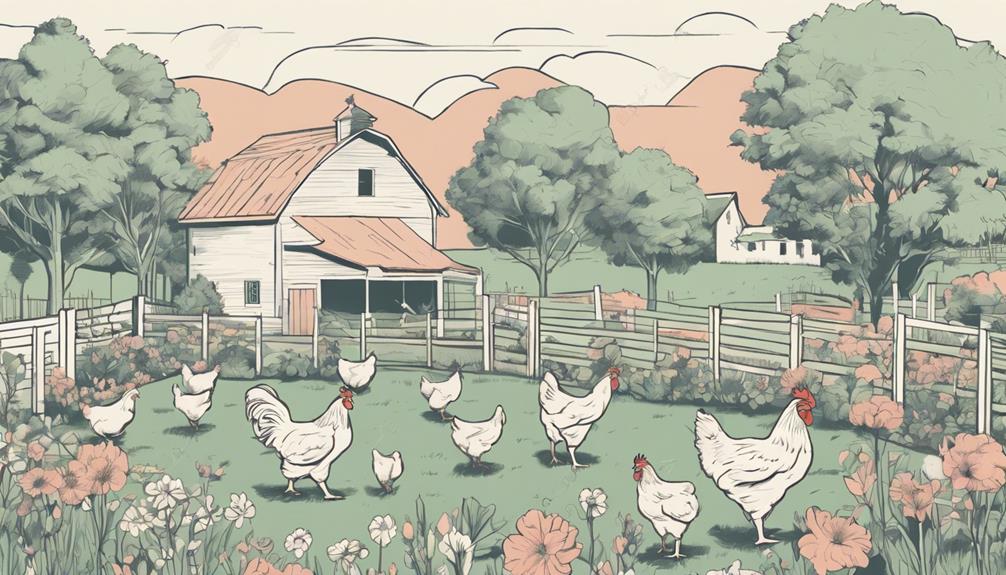How To Become More Self-Sufficient Without Starting a Full-Blown Farm…
Want to start preserving your harvest, making your own soap, or building a backyard root cellar — but not sure where to begin? “Homesteading Advice” gives you instant lifetime access to 35+ practical homesteading books on food preservation, veggie gardening, DIY natural cleaning products (save over $250 per year with this skill alone), brewing, off-grid energy, and a whole lot more…
Click Here To Check It Out Now!
“I’ve been thinking about turning part of my backyard into a small, sustainable farm where I can keep a few chickens and maybe a couple of goats. The space is about half an acre, but I’m not sure where to start with planning it out. How do I create a site plan for backyard livestock that takes into consideration things like layout, animal needs, and gardening spaces? Any tips for making this efficient and sustainable would be really appreciated!” thanks, Sharon, Sydney, Australia.
How to Create a Site Plan for Backyard Livestock
Hi Sharon! That’s a wonderful idea. Backyard farming can be incredibly rewarding, both for your mental well-being and your dinner table. Let’s walk through everything you need to consider to create a site plan that is efficient, sustainable, and suitable for your backyard livestock.
Understanding Your Space
First things first, measure your available space accurately. Since you have about half an acre, pinpoint the dimensions on a piece of paper or software tool. Knowing your boundaries helps to plan the layout effectively.
Assessing Soil and Terrain
- Soil Testing: Test your soil to determine its quality and fertility levels. Soil test kits can be found at garden centers, or you can contact local agricultural extension offices.
- Drainage: Proper drainage is crucial for both livestock and plants. Observe how water flows on your property after a rainstorm. High spots, slow-draining areas, or spots that frequently become muddy should be addressed.
Deciding on Livestock Types
Given your space’s size, chickens and goats are excellent choices for a backyard farm. Each type of livestock has different needs:
- Chickens: Require a coop, run, and nesting boxes. They are relatively low-maintenance but need secure housing to protect them from predators.
- Goats: Need a pen or small barn for shelter, and a secure fenced area to graze. They require more space per animal compared to chickens.
Designing the Layout
Zone Planning
Divide your backyard into specific zones for different activities:
- Living Area: Where you enjoy outdoor activities.
- Livestock Area: Pens, coops, and grazing spaces.
- Gardening Area: Vegetable beds, herb gardens, and fruit trees.
Paths and Accessibility
Create paths for easy access to each zone. Ensure that paths are wide enough for wheelbarrows or garden carts. Gravel or mulch can make durable, low-maintenance pathways.
Building Livestock Housing
Chickens
- Coop Size: Aim for at least 4 square feet per chicken inside the coop.
- Run Size: Provide at least 8-10 square feet per chicken in the run.
- Nesting Boxes: One nesting box for every 3-4 hens.
- Location: Place the coop in a shaded area to protect chickens from overheating.
Goats
- Shelter: Provide a small barn or shed, at least 20 square feet per goat.
- Fencing: Goats are known escape artists, so a strong, high fence (at least 4 feet high) is essential.
- Grazing Space: While goats can adapt to different types of forages, providing a variety of grasses and safe browsing materials is beneficial.
Water and Feeding Stations
Ensure all animals have easy access to water and food:
- Water: Install water troughs or bowls; automatic waterers can save time.
- Feeders: Use raised feeders to keep feed clean and dry.
- Storage: Store feed in a dry, rodent-proof location nearby.
Manure Management
Handling manure efficiently is key for sanitation and plant health:
- Composting: Set up a compost bin to turn manure into nutrient-rich fertilizer for your garden.
- Regular Cleaning: Clean pens and coops regularly to reduce odors and flies.
Gardening Integration
Utilizing the garden as part of your livestock area can be highly beneficial. Here’s how:
- Companion Planting: Plant herbs and veggies that can deter pests or benefit from the manure compost.
- Chicken Tractors: Movable chicken coops can help till the soil and fertilize it with manure.
Permitting and Zoning Regulations
Check local laws and regulations regarding backyard livestock. Every city has different rules about animals like chickens and goats. You may need specific permits or adhere to restrictions on the number of animals you can keep.
Efficiency and Sustainability Tips
Finally, consider ways to make your backyard farm more efficient and sustainable:
- Rainwater Harvesting: Collect rainwater to use for watering plants and providing water for livestock.
- Solar Power: Install solar panels to power automatic feeders, waterers, or other farm equipment.
- Crop Rotation: Rotate plants within your garden to maintain soil health and reduce pests.
Final Thoughts…
Sharon, setting up a backyard livestock farm is a wonderful and rewarding project that requires thoughtful planning. By understanding your space, considering animal needs, and integrating sustainable practices, you can create an efficient, enjoyable, and productive backyard farm. Thank you for reaching out, and best of luck with your farming journey in Sydney!

